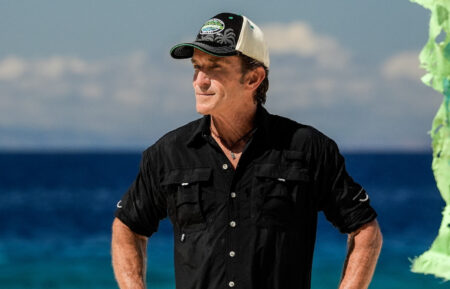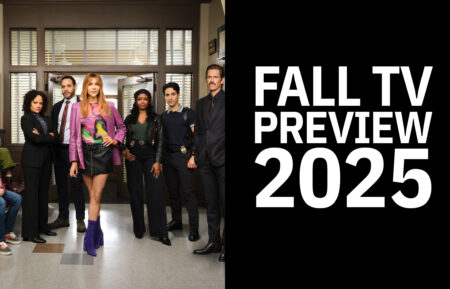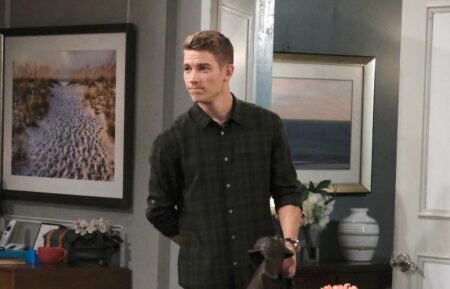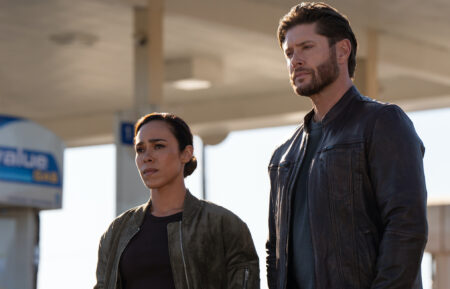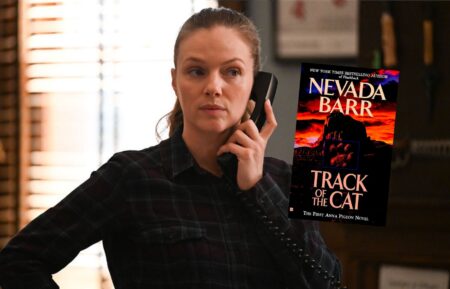‘The Pitt’ Director Goes Inside Robby’s Breakdown, Langdon Fight & More
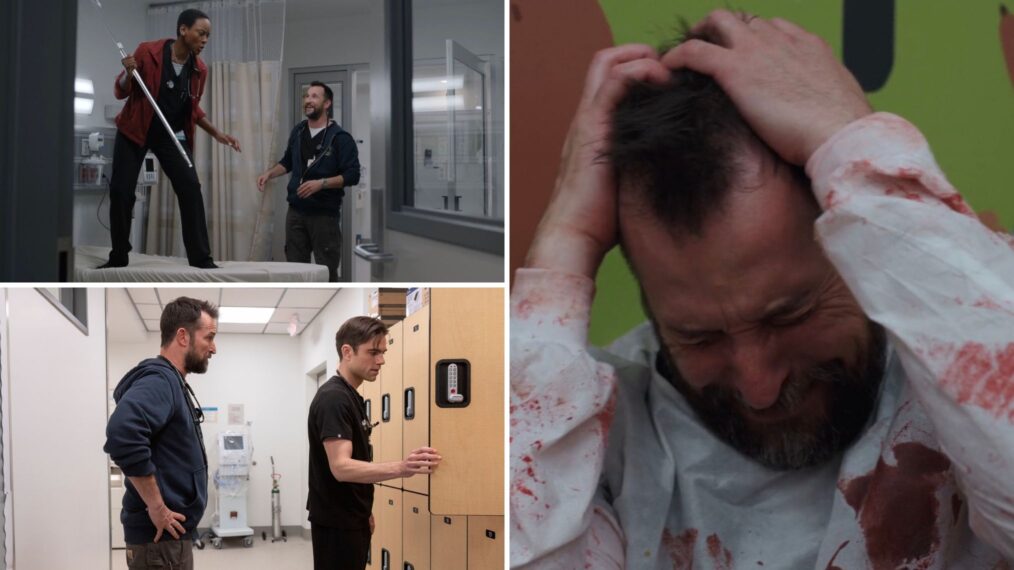
Emmys
From its series premiere on HBO Max, one thing became evident about The Pitt: This is the best show of 2025, with Emmy-worthy work both in front of and behind the camera. Not only does it excel in showcasing the doctors and patients at the Pittsburgh Trauma Medical Center, but it also does so in a way that’s fresh and unique: in real-time, with each Season 1 episode covering one hour of a 15-hour shift.
Leading the charge is Robby (Noah Wyle), the attending on shift grappling with it being the anniversary of his mentor’s death (a day he usually takes off), the usual pressures of the ER, the added ones of specific traumas, and a mass casualty shooting at which his stepson was present. All season is building up to a breakdown, which comes in Episode 13, one of the best of the season. Each episode tracks the weight being added to his shoulders, but none more so than this one, beautifully directed by Damian Marcano (who also was behind the camera for Episodes 3, 6, and 10, and will return for Season 2).
“I always was concerned about the human thread. The medicine that we do on the show is brilliant. I can’t even take full credit for that because we have actual physicians that come and give us a medical rehearsal right before we shoot a scene if we’re in the heats of a trauma or something like that,” Marcano tells TV Insider. “When I’m directing all of those scenes, I try to remind our performers, ‘Hey, you have this going on with this person.'”
He notes that the real-time aspect also allows the continuity to remain “so fresh,” such as in Season 1 Episode 6, when Santos (Isa Briones) drops the scalpel into Garcia’s (Alexandra Metz) foot, then we see her stitching it up.
Below, director Damian Marcano takes us inside some key moments from his Season 1 episodes.
The Pitt, Season 2, TBA, HBO Max
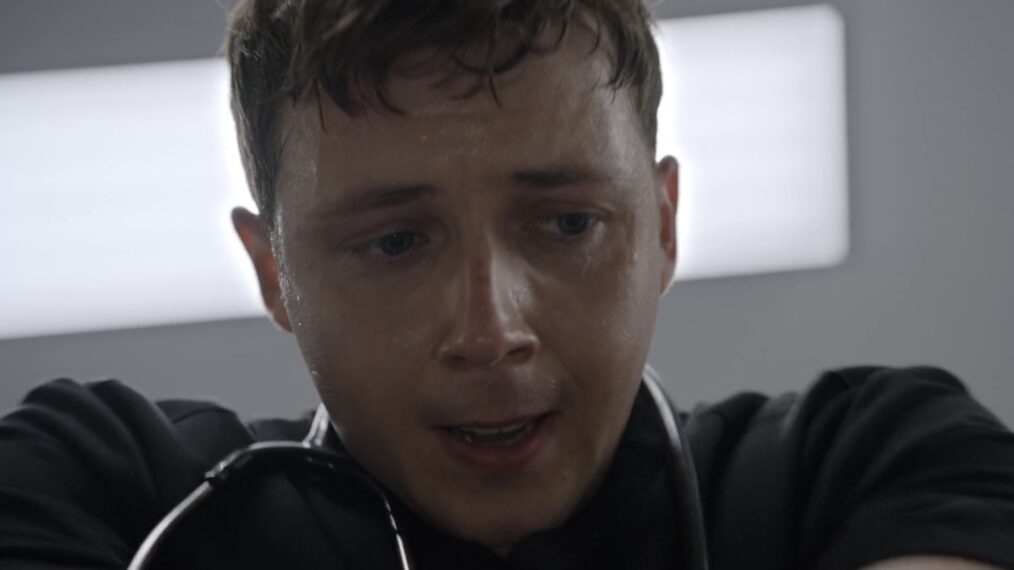
Whitaker loses Milton (Season 1 Episode 3)
It’s early on in Whitaker’s (Gerran Howell) first shift in the ER—the third hour—when he loses a patient after struggling to accept he has. Robby assures him it wasn’t his fault, and he has to learn to live with death, accept it as much as his own mortality, and find balance he himself has yet to.
“Being that that was my first episode, that was the first time to try telling the story so pitiful that you have to believe it. That’s what I do with everything I direct. I was looking, at that time, of just, who’s the smallest person here? We’ve been through two episodes at this point. Who’s the little guy in this equation? I wanted to make the little guy the hero for a second. So we just sort of introduced a new camera angle, which is the first shot of the episode from which we are, Whitaker’s like a hero,” Marcano explains. (See that shot above.) “He’s sweating, and he’s there trying to save Mr. Milton, and we are all there for it, and we’re also all there for it when he loses it. That was the first attempt at trying to find something small and trying to make it big.”
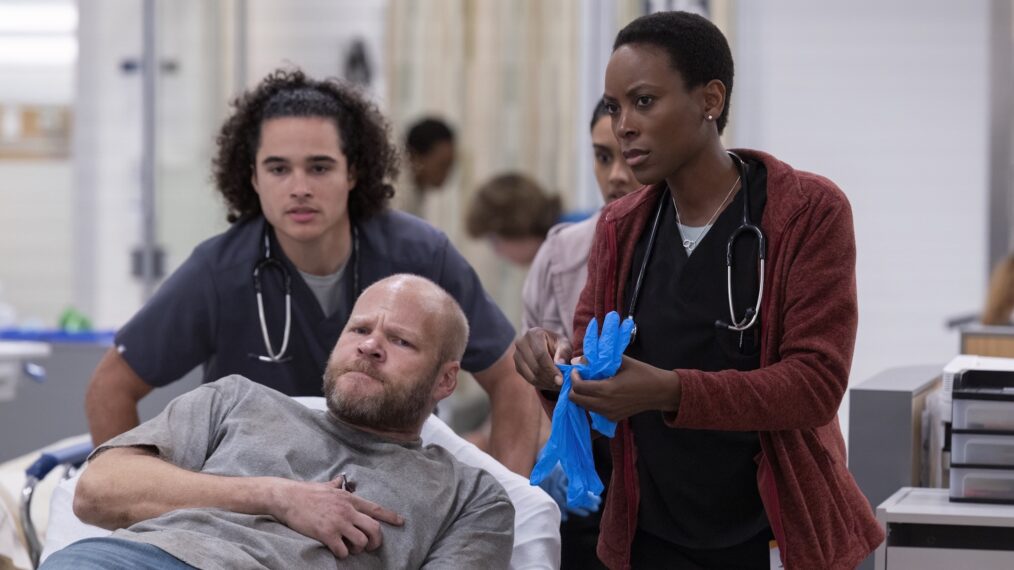
The nail in the chest (Season 1 Episode 3)
When it came to shooting the patient with the nail in his chest (Blake Shields Abramovitz), that was when Marcano being “a very reactionary director” came into play. He praises the Director of Photography, Johanna Coelho, as well as the camera operators as well. He shares they call the “Aymae camera,” for their camera operator, Aymae Sulick, who’s petite.
“We were able with the grip department to build something to put her on the gurney with Hank when he came in with the nail beating in his chest,” he says. “I wanted to be there. I was like, ‘Wait a minute. We have to show the world what this is and I don’t want to cover it from the side.’ We’re also a set that has no dollies. We have no tripods. We don’t use anything like that. We want this to be captured as if you are capturing it, and we always try to put the camera somewhere a human could be. My thought that day was just, ‘Could we put Aymae on the gurney? Could we move Aymae with the gurney with a patient going through this entire performance?’ And our actor who played Hank was just brilliant. So he was game. That’s the attitude and the camaraderie of our set, and you see it from Noah Wyle on down, everyone’s game. Everyone is so open to doing what we have to do with respect to each of our jobs, to telling this story the best way.”
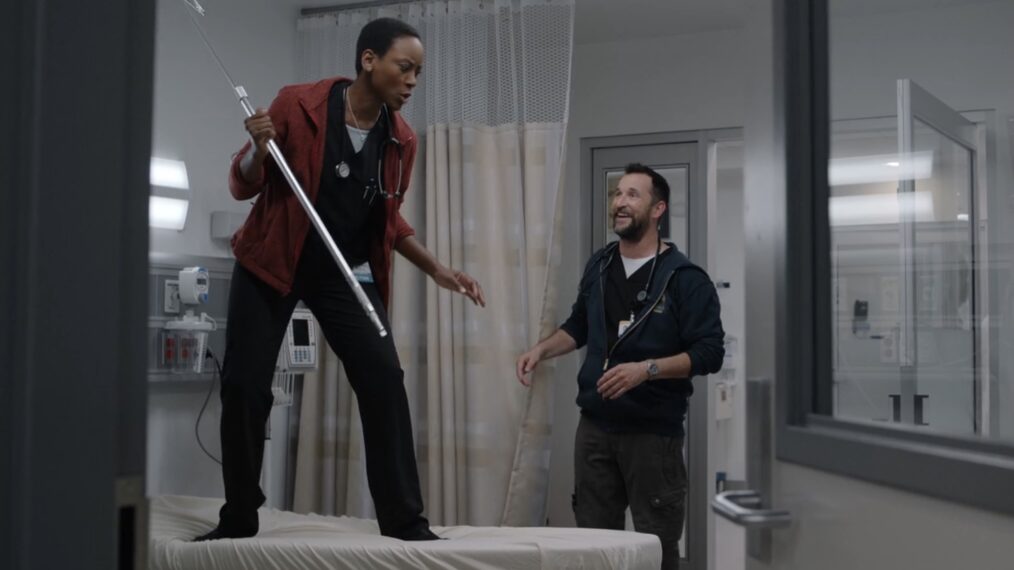
Collins vs. rats (Season 1 Episode 3)
In one of the few moments of levity on the show, Collins (Tracy Ifeachor) hops up on a gurney, wielding an IV stand as a weapon, upon hearing about rats being loose in the ED. Robby actually smiles. It’s a scene that gives us bits and pieces about their personal history.
Marcano recalls reading the scene and checking out that room with Ifeachor. “We go in room 15, she hops up on the bed, she says, ‘Hand me the IV stand,’ and Tracy just kind of flips it in her hand and I’m like, ‘Wait, Tracy, is there is some kind of fencing background or something I didn’t know about in your résumé?’ because it was so impressive. It was like Matrix-style. And I was like, ‘Can you do that on camera for us?’ Because I just had Collins up on the bed holding this thing. She turned it into a work of art.”
That was one of his favorite shots of Season 1. “It was so not who they had to be all the time,” he says. “It was just a moment essentially where the hair was let down and you wonder, because it’s so early on, where’s this going to lead? Or how much more juxtaposition are we going to get on this relationship in this 15-hour shift? But just like in real life, you’re probably not going to get too much information about a relationship in one day at work. You have the breadcrumbs, I think, that all keep us salivating and wanting more, and I think the two of them are funny and charming.”
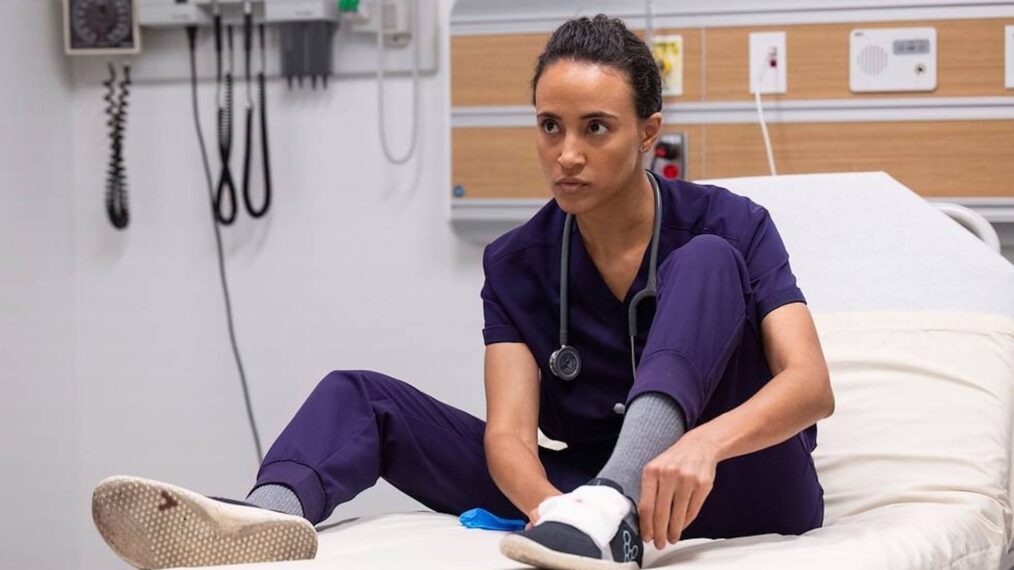
Santos drops a scalpel into Garcia's foot (Season 1 Episode 6)
It’s in this episode that Santos, who has been so sure of herself so far and eager to do procedures, gets a wake-up call, when she drops a scalpel into surgeon Garcia’s foot in the middle of doing a chest tube. Because we watch the scalpel fall, land in Garcia’s foot, and then follow their reactions, we can feel what Santos is in that moment.
“It’s embarrassing. It’s like first day at work, the worst thing that you can do,” laments Marcano. “You just do dumb stuff sometimes, right? You set out with the intention of, please, please, please. From the time we meet Santos, she’s distributing nicknames. She is sort of like the unofficial leader of the student squad. She’s definitely taken a leadership role over Huckleberry [Whitaker] and Crash [Shabana Azeez‘s Javadi], as she likes to call them. And it was just really nice to see this moment where this person who’s just on their own rocket ship have to take a slice of that humble pie. And I don’t think there was any better way to do it than having her drop the scalpel into the foot of someone who she definitely has more than an admiration for.”
This is one of those instances where the real-time aspect of the show and the director wanting to follow the personal connections of the characters is highlighted.
“When I’m directing, I try to remind our performers, ‘Hey, you have this going on with this person. Let’s not forget you dropped that scalpel in her foot. That was only at hour ago.’ That’s also a joy of our show, that the continuity is so fresh,” he says. “Sometimes you direct a show and you have to tell an actor, ‘Oh, remember three weeks ago you stabbed her in the foot? So you guys are still on shaky ground.’ But it’s a definite difference when you have to now go into the scene where they’re doing the stitches and you even have our character Minu [Arun Storrs], who came in with the gloved foot, get an earful [and] take in this lover’s quarrel under suturing or whatnot. It’s like, why do we choose to put Minu in that hallway to take that in? Because we are somehow trying to find the human thread between all of these people that happen to be at Pittsburgh Trauma Medical Center.”
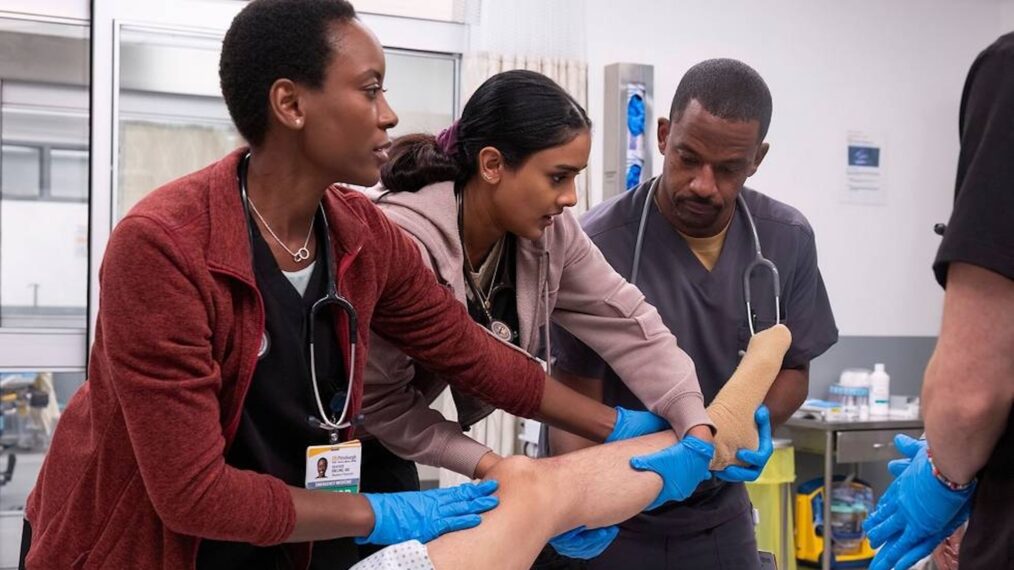
Javadi's confidence grows (Season 1 Episode 6)
As Santos gets that reality check, Javadi’s confidence grows, when she successfully does a hip reduction.
“The Captain Morgan, yeah,” Marcano says. “It’s not even just for that episode, but I tried to do, with each one of them, always remember the personal connection between everyone. So that wasn’t just Robby to medical students as far as teacher to student, but it was also, what’s going on with Robby and Collins? What’s going on with Javadi’s trajectory versus Huckleberry’s trajectory, right? Crash versus Huckleberry versus Santos.”
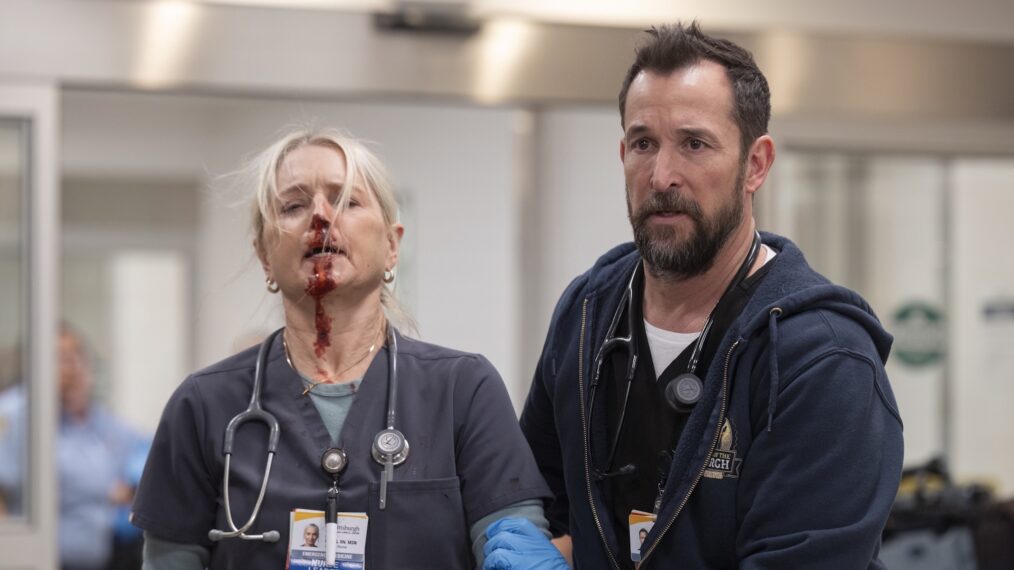
The aftermath of Dana's attack (Season 1 Episode 10)
At the end of Episode 9, charge nurse Dana (Katherine LaNasa) is punched in the face and knocked down by Doug Driscoll (Drew Powell), a patient frustrated with the wait times. She walks back inside at the beginning of Episode 10, and everyone rushes to her side upon seeing her bloody face. While everyone’s worried about her, she just wants to get back to work, and so there’s a delicate balance that we see highlighted between how Dana feels and how everyone feels about what happened and how they feel she should be feeling.
“I always had a joy directing Katherine,” shares Marcano, “and talking with her about that moment specifically and what her character was going through as far as, maybe this is when the job is too much and you say, ‘I’ve had it and I’ve quit because somebody just decked me outside or whatnot.’ I always try to attack every scene or every moment trying to find the smallest thing, like the lowest common denominator, and how do we bring this to the forefront? It’s my way of telling a story so pitiful that you have to believe it. There was this picture of her grandkids at her nurse’s station, and I remember going over there to those pictures with her and I’m like, ‘Remember, this is why we do it. It doesn’t matter what our jobs are. Some of us have a little something, whether it’s a screensaver, whether it’s a photo on our desk or something, there’s a reason that we all do it.'”
He continues, “I tried to take her through that episode, just teetering on the line, once again, in a very human way. I wanted her to ride that line of, ‘Remember why you do it, remember these kids, remember these grandkids,’ the thing that keeps us going. Sometimes our own human spirit wants to rid ourselves of that current pain.”
He points out that she’s also there for Collins, who had a miscarriage in the middle of her shift, in that episode: “Even in her down moments, people like Dana represent the people that have to be the mothers all the time. Mothers never really get a break. They just always have to be on, and she goes down and they try to keep the ER together, but at some point in the episode, she ends up having to console Dr. Collins.”
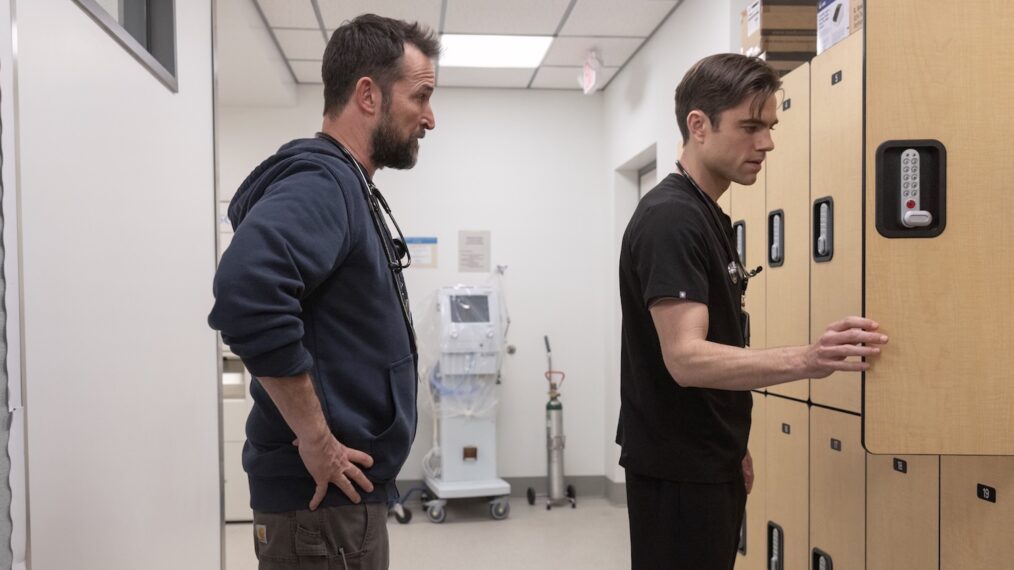
Robby vs. Langdon fight (Season 1 Episode 10)
The episode ends with Robby confronting Langdon (Patrick Ball) about being an addict and stealing pills from patients, ultimately sending him home, even as the resident tries to deny it. Wyle told us in-season that at first, he’d wondered if a stunt coordinator might be needed before realizing that instead, the scene was sad, almost like a break-up. That’s how Marcano approached it as well because they wanted to make sure it never got physical, considering Robby is still Langdon’s superior.
“There was a little moment and we thought about just with the force that you deal with the locker, maybe there’s a way that we take the bags out. There’s a definite physical way without violence to show someone that you’re very unpleased with what they’re doing,” Marcano explains.
“I did want to shoot it kind of like a breakup, because these two, for our entire season thus far, unless it was Robby and Abbot [Shawn Hatosy], it was Robby and Langdon, they were always like, ‘Wow, look how sharp that guy is. That guy is probably going to be me in two years or something.’ And being that it is a teaching hospital, obviously Robby has had something to do with that. And if any of us have ever been in a mentorship position, whether you have been a parent or are a parent, and have to have these tough discussions at times, it’s never easy and it’s always bitter. It never feels good in the moment. So we wanted to do that in a way that the breakup would happen and we would just leave the audience hanging. Is Landon coming back? Is that it?”
When it came to Langdon leaving at the end of that episode, Marcano spoke with Ball about his character being “the Friday night star quarterback. No matter what, he has that attitude. The surgeons have that attitude. Patrick was the champion of that all season long. And this is a scene in which the coach literally kicks the star quarterback off the team and we wanted to end just right there, just hooked right into the highest tension of that argument.”
It’s one of those scenes that allowed the director to show what he feels The Pitt does a great job of: “real life between the medical professionals in the hospital. We haven’t forgotten to show you that they are actual people.”

The shooting chaos continues (Season 1 Episode 13)
The mass casualty incident begins in Episode 12, when a shooting begins at Pittfest and victims are brought to the hospital. It’s the first time the show spends significant time in the ambulance bay and the other parts of the ED, with everyone going zone to zone to zone and constantly on the move.
That “was a very big episode, and I really thanked Scott [R. Scott Gemmill] and Joe Sachs, who were my writers for that. I usually do a lot of big stuff with a lot of movement, and I just thought that this is what I came to do at this show. I love all of my other episodes, but I, as a director, just really love being in the middle of mayhem when telling a story,” Marcano admits. “And [Episode] 113 was just that.”
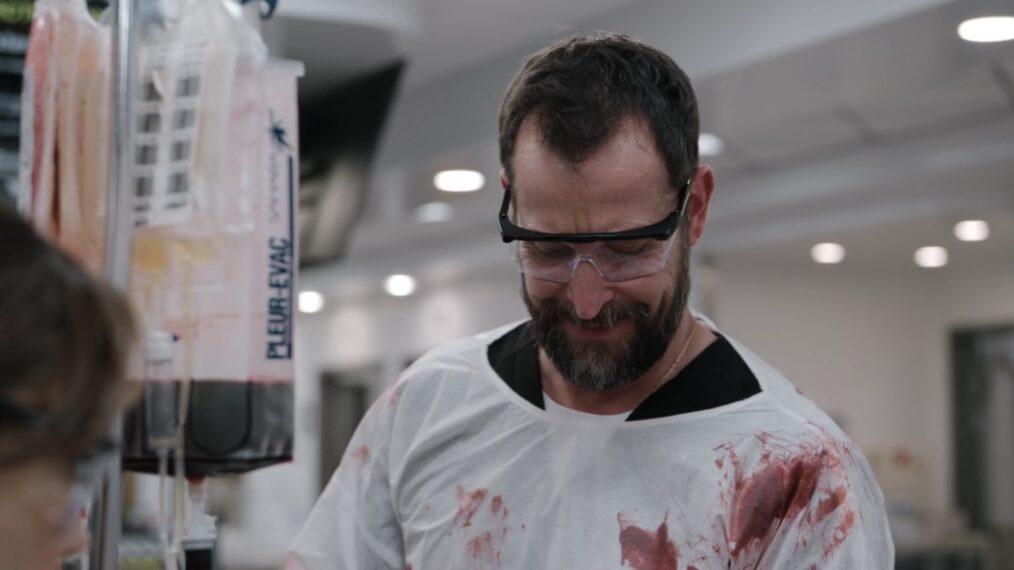
Robby loses Leah (Season 1 Episode 13)
Originally, Robby was supposed to attend Pittfest with his stepson, Jake. Instead, Jake gave his ticket to his girlfriend, Leah, who’s one of the most critical patients to be brought in. She ultimately doesn’t make it, something Robby refuses to accept. He works on her longer than any other patient, using up resources they frankly don’t have.
“The superhero is wounded, and then at the end of the episode, he finally buckles and collapses to his knees,” notes Marcano, who is sure to call out the real medical professionals who are superheroes. “That’s the thing about superhero movies. They never say who’s in trouble. They don’t really care who it is. They just come running. And this is the closest thing I’ve seen to that as a human being, just being able to be there on a set that feels so real all the time. They come running. But in that instance, you find out maybe the superhero, what’s their weakness, what’s their kryptonite? And his kryptonite was literally having Leah brought in. He’d been dealing with a lot of minor things. There’s the emotional toll that’s tracked hour after hour.”
He continues, “He does everything he can. I think there’s some part of him that maybe feels like if he could save this one, the rest of the day will be worth it.” He also doesn’t want to have to tell his stepson that he couldn’t save his girlfriend (which he does eventually have to do). “Also due to the brilliant acting of Noah, I just remember us working these minor beats throughout this episode and just slightly turning the dial and slightly turning the dial so that we would have the room for this grand finale. And that grand finale was, guess what? Our hero just happens to be human.”
What this episode does well is also follow the rest of the staff as they watch Robby while working on their own patients.
“Those guys are all the sidekicks and the heroes in training. It’s like in Batman and Robin in a sense, if you look at all of the other guys as Robin, as a collective Robin, for once they’re even seeing the person that they back up go down,” Marcano tells us. “I always thought that those parts of the script, even from the time that we toned this episode, was just always, how do we expand those moments and not just have it just be something internal that our hero is going through, but guess what? If he can go down, maybe this is a sign that they all have some kind of weakness or maybe something can come through that door that changes each of their days.”
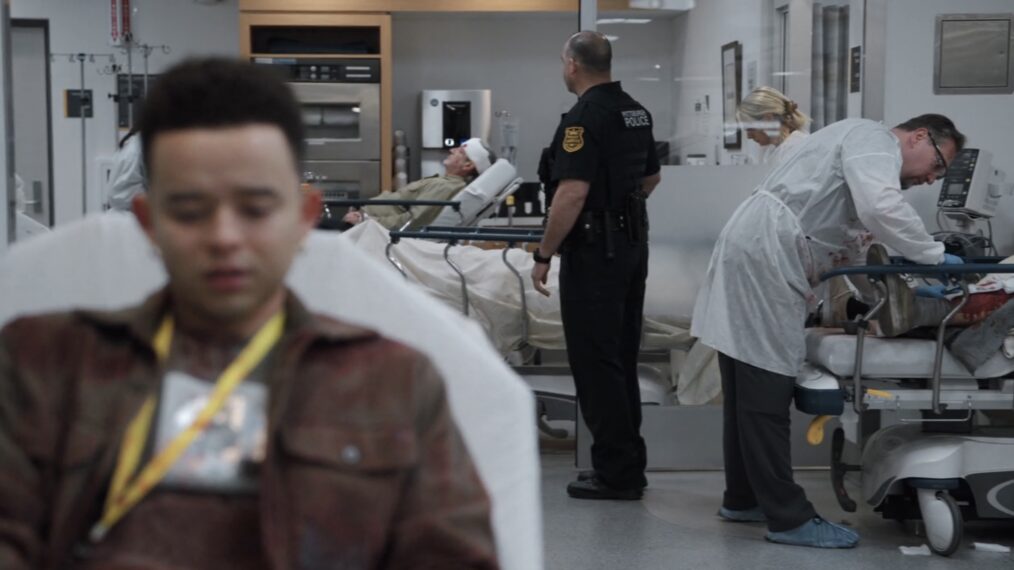
Bringing Leah's body to the morgue (Season 1 Episode 13)
Marcano reveals that one of the most powerful moments of the episode wasn’t even scripted at first: “My AD, Kevin Zelman, had pitched this idea to me and I thought it was brilliant. It was just when Jake is sitting back there, they’ve already worked on his leg, Leah has passed, and her body is wheeled into the morgue, unknown to him. She’s wheeled in right behind him. I always thought it was such a touching moment, and I was glad that it was in the episode.”
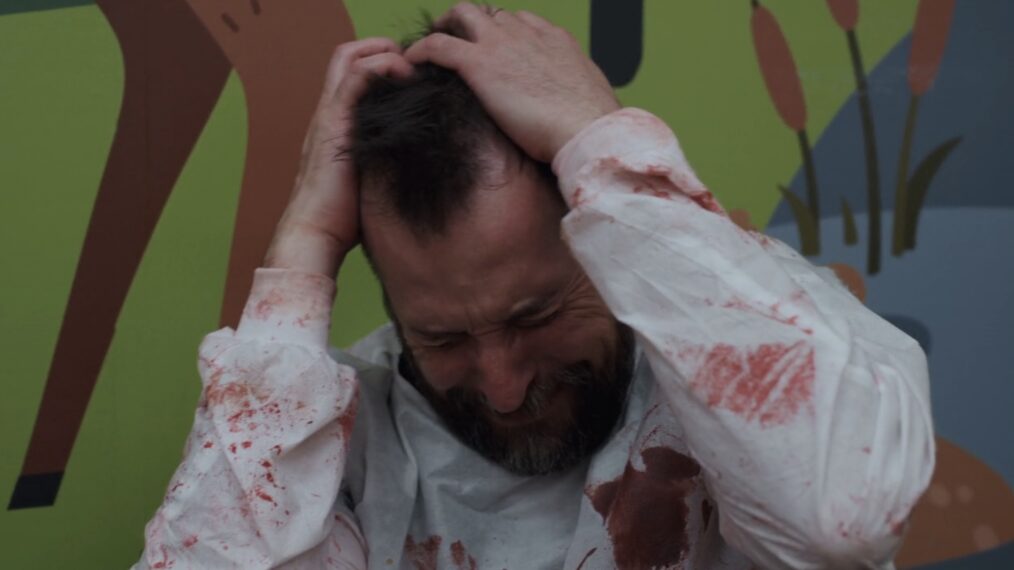
Robby's breakdown (Season 1 Episode 13)
Robby does have to tell Jake that his girlfriend died, and when his stepson asks to see her, he can’t deny him. It’s in the makeshift morgue that Robby breaks down, talking about the lives he failed to save and how he’ll remember each one, including Leah. He quickly pushes Jake out of the room before the episode ends on the shot of him above (which we think should pretty much lock the Emmy for Noah Wyle). It’s a beautifully crafted scene.
“We set out to capture a very human story. Our show is about the patients, but for me, it was more about the medical practitioners and the fact that as many lives as these people save, sometimes they need a hug, they need a little human understanding, a little bit more human connection,” Marcano says. “Each of us have a breaking point, have a point when that’s just one too many drops in the bucket. And I felt that part of that episode for me was not just about that character, but it was about the millions of people that could possibly watch this and watch would they feel that. We all have those moments.”
In that scene, “I saw it all pour out” of Noah Wyle, the director shares. “I saw everything that he had. This man has a lot to carry man from — Even when we prepped this show, the cast goes through medical training. And so even though that scene happens in Episode 13, that probably also happened about five months after we started filming, and long days, short nights, coming back to do it every day, there is a bit of life imitating art, and I think he just let it all out.”
Marcano adds, “We have that environment on the show that each of our performers — we shoot it in a way that it’s not just the continuity, but it’s in a way that they can really feel comfortable with the performance and locking into what we’re looking for. And when you have moments like that, I consider that like lightning in a bottle. It’s probably written as ‘Dr. Robby breaks down,’ and that is the greatness of Noah Wyle, is to take the last five months of performances and the last five months of trying to get it all right, and the last five months of trying to build upon each performance and just having this general release that, I think, is very cathartic in a sense.” (Wyle used that same word when he spoke with us in-season about that scene.)

